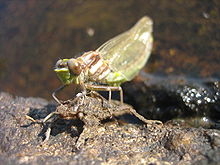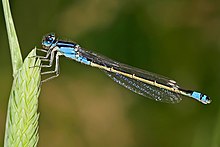I bet I got You on the word "STING". Do not be afraid as these photos will not sting! Once You begin to learn about these insects, there will be no more fear at the mention of their name! It is important to realize that humans share the planet with many other living things. We are loosing bees, (wasps, hornets, dragonflies and many others) due to pesticides and other things happening in the Environment. Please help raise awareness about the disappearing insects that pollinate our plants. In your photostudy tonight, I tried to capture the graceful beauty of these talented winged insects.
Enjoy!
Red Paper Wasp
http://en.wikipedia.org/wiki/Polistes
Polistes
From Wikipedia, the free encyclopedia
Wasps of the cosmopolitan genus Polistes (the only genus in the tribe Polistini) are the most familiar of the polistine wasps, and are the most common type of paper wasp. It is also the single largest genus within the family Vespidae, with over 300 recognized species and subspecies. Their innate preferences for nest-building sites leads them to commonly build nests on human habitation, where they can be very unwelcome; although generally not aggressive, they can be provoked into defending their nests. All species are predatory, and they may consume large numbers of caterpillars, in which respect they are generally considered beneficial. The European paper wasp, Polistes dominula, was introduced into the US about 1981 and has quickly spread throughout most of the country, in most cases replacing native species within a few years. This species is very commonly mistaken for a yellowjacket, as it is black, strongly marked with yellow, and quite different from the native North American species of Polistes. Polistes wasps can be identified by their characteristic flight; their long legs dangle below their bodies, which are also more slender than a yellowjacket.[2]
Life cycle[edit]
The general life cycle of Polistes can be divided into four phases:[3]
- Founding (or pre-emergence) phase
- Worker phase
- Reproductive phase
- Intermediate phase
The founding stage begins in the spring when a solitary female (the "foundress") or a small group of related females initiates the construction of a nest. The wasps begin by fashioning a petiole, a short stalk which will connect the new nest to a substrate (often the eave of a house or outbuilding), and building a single brood cell at the end of it. Further cells are added laterally in a hexagonal pattern, each cell surrounded by six others. Although nests can achieve impressive sizes, they almost always maintain a basic shape: petiolated (stellocyttarous), single-combed, unprotected, and open (gymnodomous).
Eggs are laid by the foundress directly into the brood cells and are guarded by the foundress and the assisting females (if present). After the first larvae hatch, the foundress feeds them via progressive provisioning, bringing softened caterpillar flesh to the larvae multiple times throughout their development (as opposed to the one-time provisioning seen in some other hymenopteran groups). Each of this first seasonal brood of new paper wasps is exclusively female and destined to a subordinate worker position inside the nest; they do not found their own nests and instead assist their mother in the care and maintenance of future sisters.
Some foundress wasps do not build their own nests, but rather attempt to usurp that of another female. These usurpation attempts may or may not be successful, but almost always result in impressive displays of aggression and violence. Females may also adopt a more peaceful alternative reproduction strategy by joining the nest of a close relative (usually a sister) and working as assisting females (see above). In the latter case, evidence shows such cofounding females are generally, but not exclusively, close relatives.[3]
The worker phase usually begins in the early summer, roughly two months after colony initiation, with the emergence of the first workers. These new females take up most of the colony's work duties, foraging, caring for brood, and maintaining the structure of the nest. Around this time, those females which assisted in nest foundation (if present) are driven from the nest by aggressive behavior on the part of the foundress, and leave either to start their own late-season nests or usurp another's.
The reproductive phase of the colony begins when the first female reproductives (the gynes) emerge from their brood cells. These reproductives differ from their worker sisters by having increased levels of fat stores and cryoprotectant carbohydrate compounds (allowing them to survive the over-wintering period). These reproductives will contribute genes directly to the next generation, while their worker sisters will normally pass along their genes indirectly.
Once male reproductives emerge and both males and females disperse from the natal nest for mating flights, the so-called intermediate phase begins. Brood care and foraging behavior decline and worker numbers drop as dying individuals are no longer replaced by new ones. Intracolonial aggression increases and the social cohesion of the nest declines. In temperatePolistes species, individuals (almost exclusively inseminated females) gather in groups of up to 50 individuals and seek a sheltered location (called a hibernaculum) in which to over-winter.
Dominance hierarchy system[edit|edit source]
Morphologically, the foundress and subordinate reproductive members of the colony differ little. However, several studies have shown behavioral differentiation occurs among females both between and within generations. This has been best-studied in P. dominula. As mentioned above, there is very little differences in morphs. In Polistes exclamans the queen have different amounts of glucose, fructose and trehalose which lead to different cryoprotectant levels. This alters their survivability in different temperatures, increasing their ability to reproduce.
Blue Jay
Double Pink Althea
Blue Dragonfly
http://en.wikipedia.org/wiki/Dragonfly
Dragonfly
From Wikipedia, the free encyclopedia
A dragonfly is an insect belonging to the order Odonata, the suborder Epiprocta or, in the strict sense, the infraorderAnisoptera (from Greek ανισος anisos, "uneven" + πτερος pteros, "wings", because the hindwing is broader than theforewing).[1] It is characterized by large multifaceted eyes, two pairs of strong transparent wings, and an elongated body. Dragonflies can sometimes be mistaken for damselflies, which are morphologically similar; however, adults can be differentiated by the fact that the wings of most dragonflies are held away from, and perpendicular to, the body when at rest. Dragonflies possess six legs (like any other insect), but most of them cannot walk well. Dragonflies are among the fastest flying insects in the world.
Dragonflies are important predators that eat mosquitoes, and other small insects like flies, bees, ants, wasps, and very rarelybutterflies. They are usually found around marshes, lakes, ponds, streams, and wetlands because their larvae, known as "nymphs", are aquatic. Some 5680 different species of dragonflies (Odonata) are known in the world today.[2]
Though dragonflies are predators, they themselves are subject to predation by birds, lizards, frogs, spiders, fish, water bugs, and even other large dragonflies.
Life cycle[edit|edit source]
Female dragonflies lay eggs in or near water, often on floating or emergent plants. When laying eggs, some species will submerge themselves completely in order to lay their eggs on a good surface. The eggs then hatch into nymphs. Most of a dragonfly's life is spent in the nymph form, beneath the water's surface, using extendable jaws to catch other invertebrates(often mosquito larvae) or even vertebrates such as tadpoles and fish.[3] They breathe through gills in their rectum, and can rapidly propel themselves by suddenly expelling water through the anus.[4] Some nymphs even hunt on land,[5] an aptitude that could easily have been more common in ancient times when terrestrial predators were clumsier.
The larval stage of large dragonflies may last as long as five years. In smaller species, this stage may last between two months and three years. When the larva is ready to metamorphose into an adult, it climbs up a reed or other emergent plant. Exposure to air causes the larva to begin breathing. The skin splits at a weak spot behind the head and the adult dragonfly crawls out of its larval skin, pumps up its wings, and flies off to feed on midges and flies. In flight the adult dragonfly can propel itself in six directions; upward, downward, forward, back, and side to side.[6] The adult stage of larger species of dragonfly can last as long as five or six months.
Flight speed[edit]
Tillyard claimed to have recorded the Southern Giant Darner flying at nearly 60 miles per hour (97 km/h) in a rough field measurement.[7] However, the greatest reliable flight speed records are for other types of insects.[8] In general, large dragonflies like the hawkers have a maximum speed of 10–15 metres per second (22–34 mph) with average cruising speed of about 4.5 metres per second (10 mph).[9]
Dragonflies and damselflies[edit|edit source]
Damselflies (suborder Zygoptera), typically smaller than dragonflies, are sometimes confused with newly moulted dragonflies. However, once a dragonfly moults, it is already fully grown. There are other distinctions that set them apart: most damselflies hold their wings at rest together above the torso or held slightly open above (such as in the family Lestidae), whereas most dragonflies at rest hold their wings perpendicular to their body, horizontally or occasionally slightly down and forward. Also, the back wing of the dragonfly broadens near the base, caudal to the connecting point at the body, while the back wing of the damselfly is similar to the front wing. The eyes on a damselfly are apart; in most dragonflies the eyes touch. Notable exceptions are the Petaluridae (Petaltails) and the Gomphidae (Clubtails).
The largest living odonate by wingspan is actually a damselfly from South America, Megaloprepus caerulatus (Drury, 1782)while the second largest are females of the dragonfly Tetracanthagyna plagiata (Wilson, 2009). The female T. plagiata is probably the heaviest living odonate.[10]
Flowers and Bees outside my kitchen window!
...this is brendasue signing off from Rainbow Creek. See You next time.
Remember: Try to Stop using Pesticides as they are killing the bees.
O+O



















































No comments:
Post a Comment
Hi Everybody! Please say hello and follow so I know you are here! Due to the inconsideration of people trying to put commercials on my blog comment area, I have restricted use of anonymous posts. Sorry that some hurt all.
My public email is katescabin@gmail.com No spammers or trolls